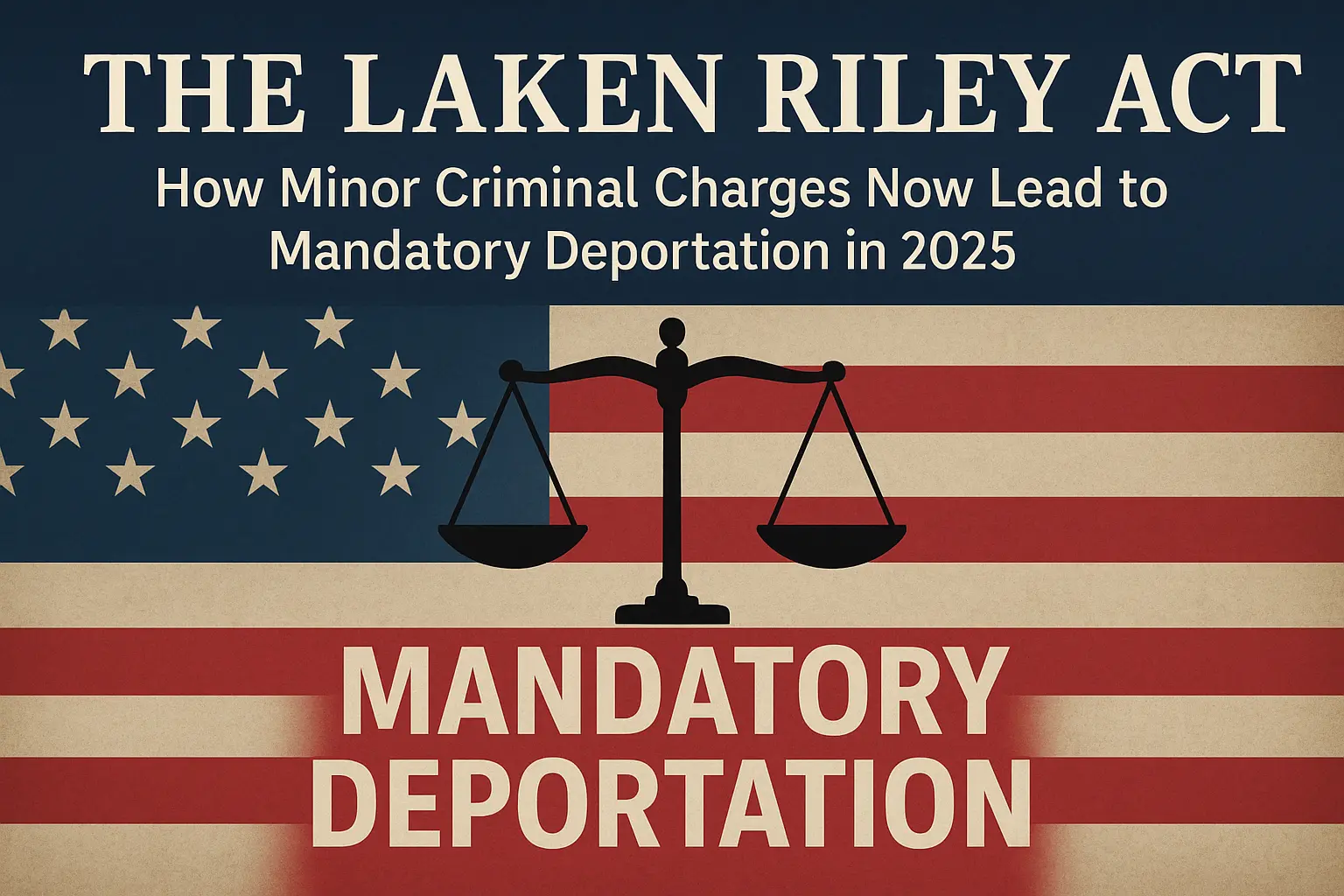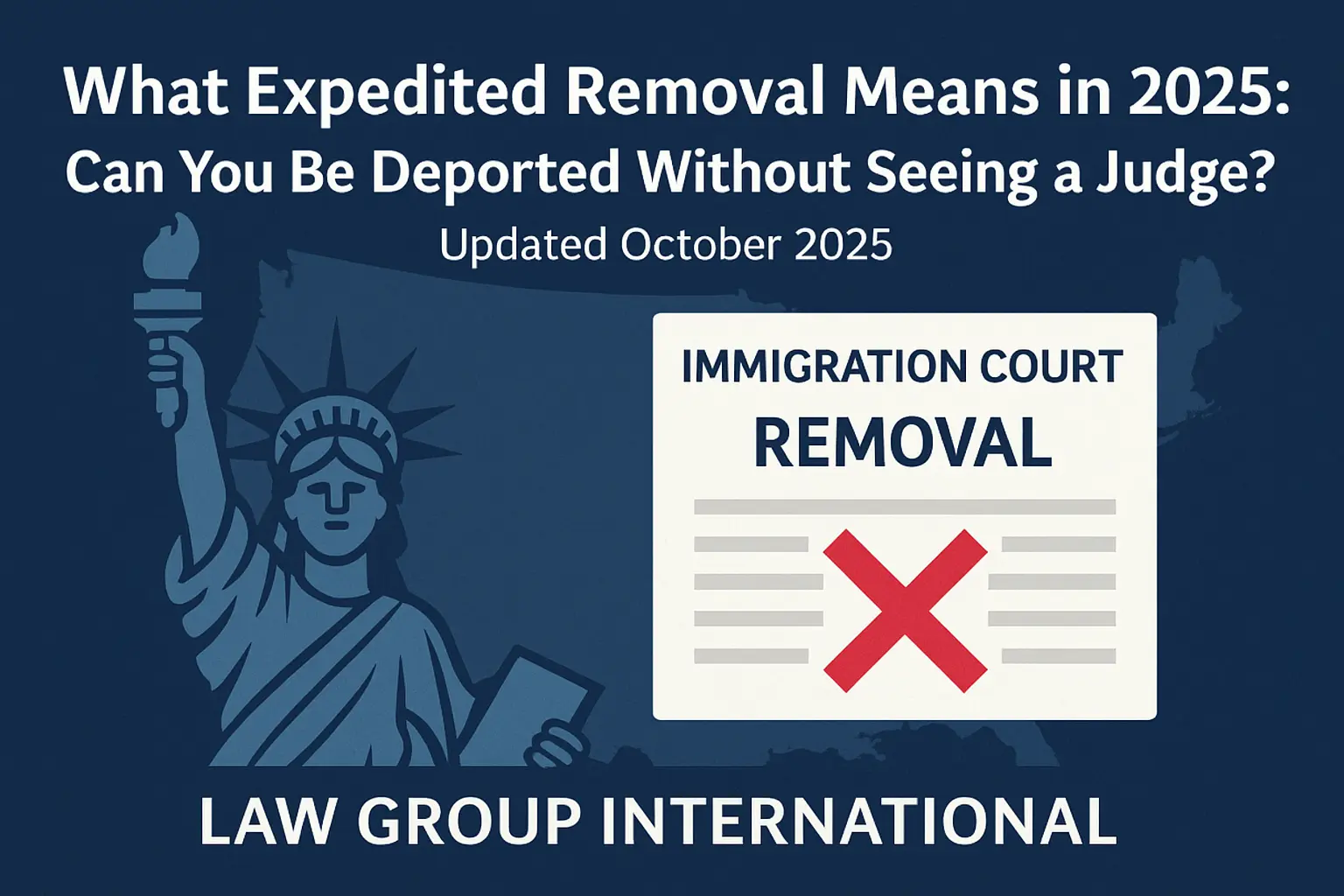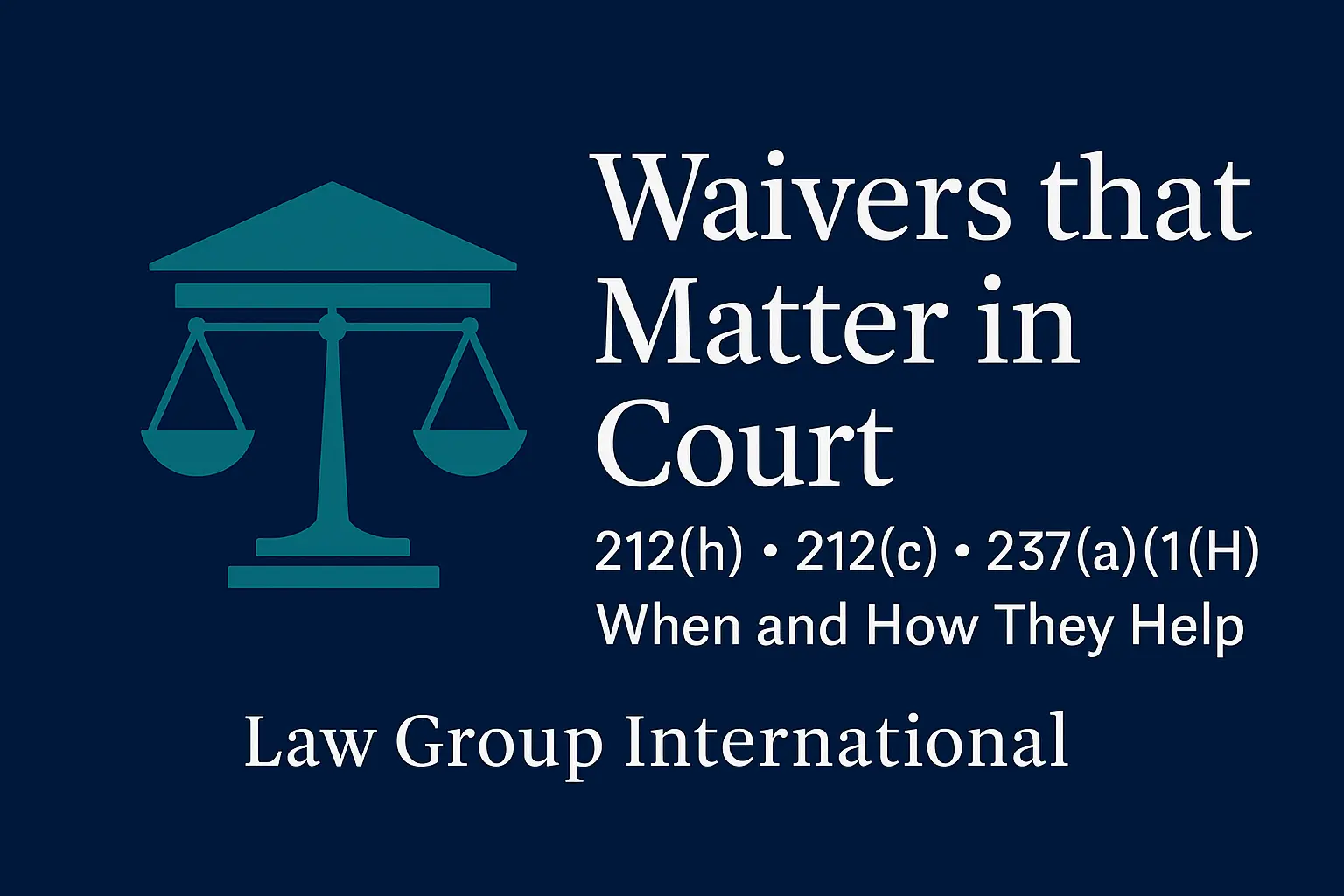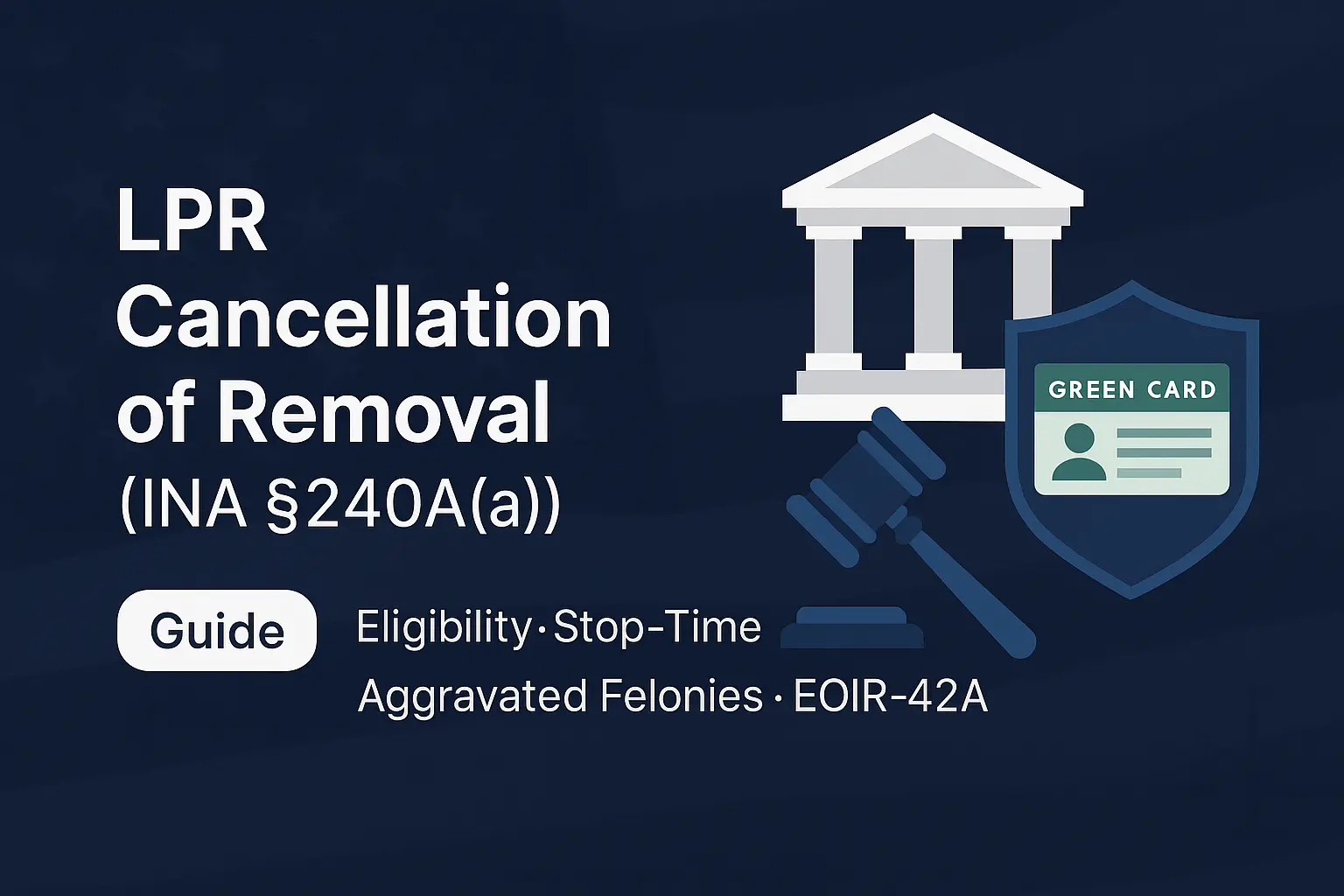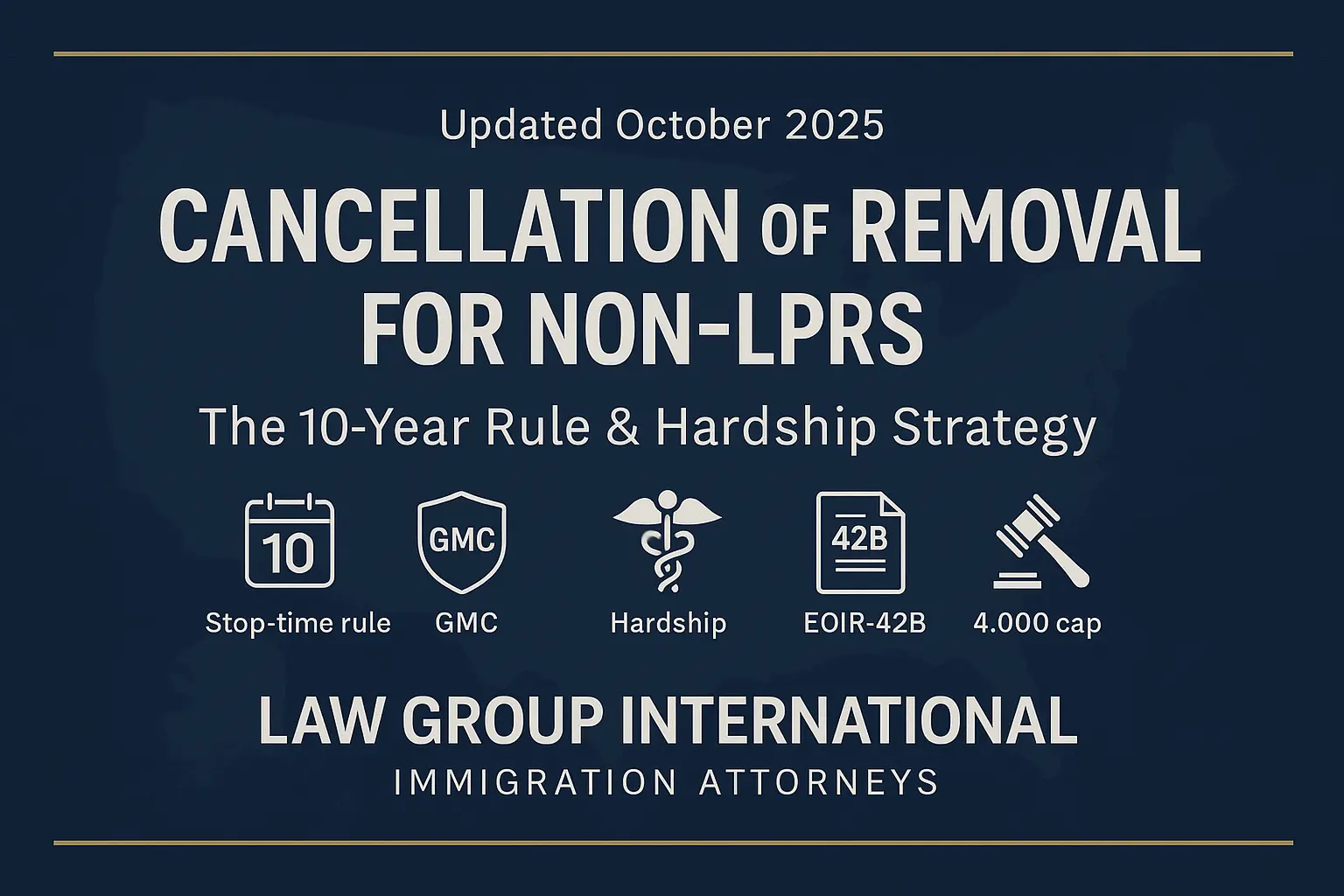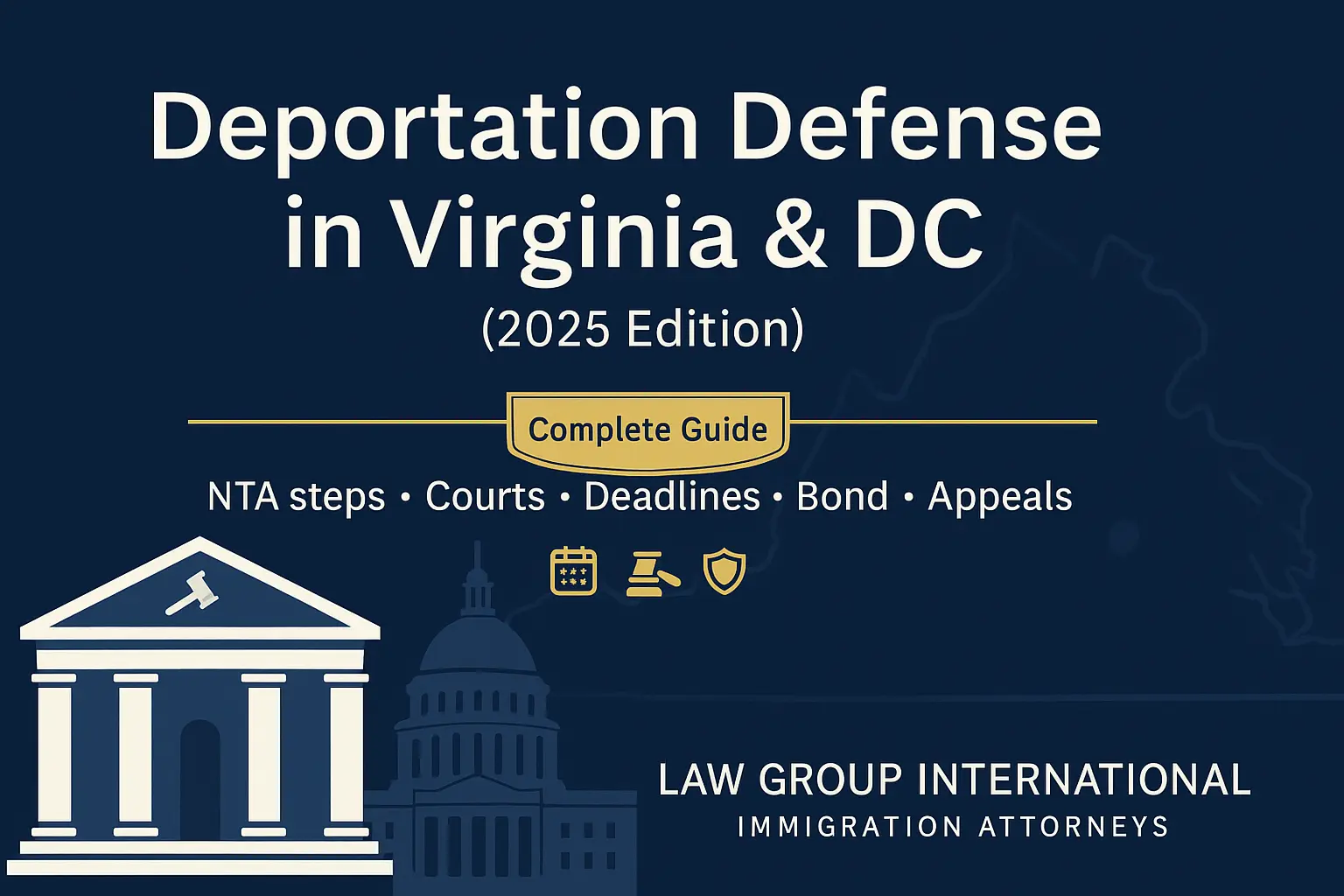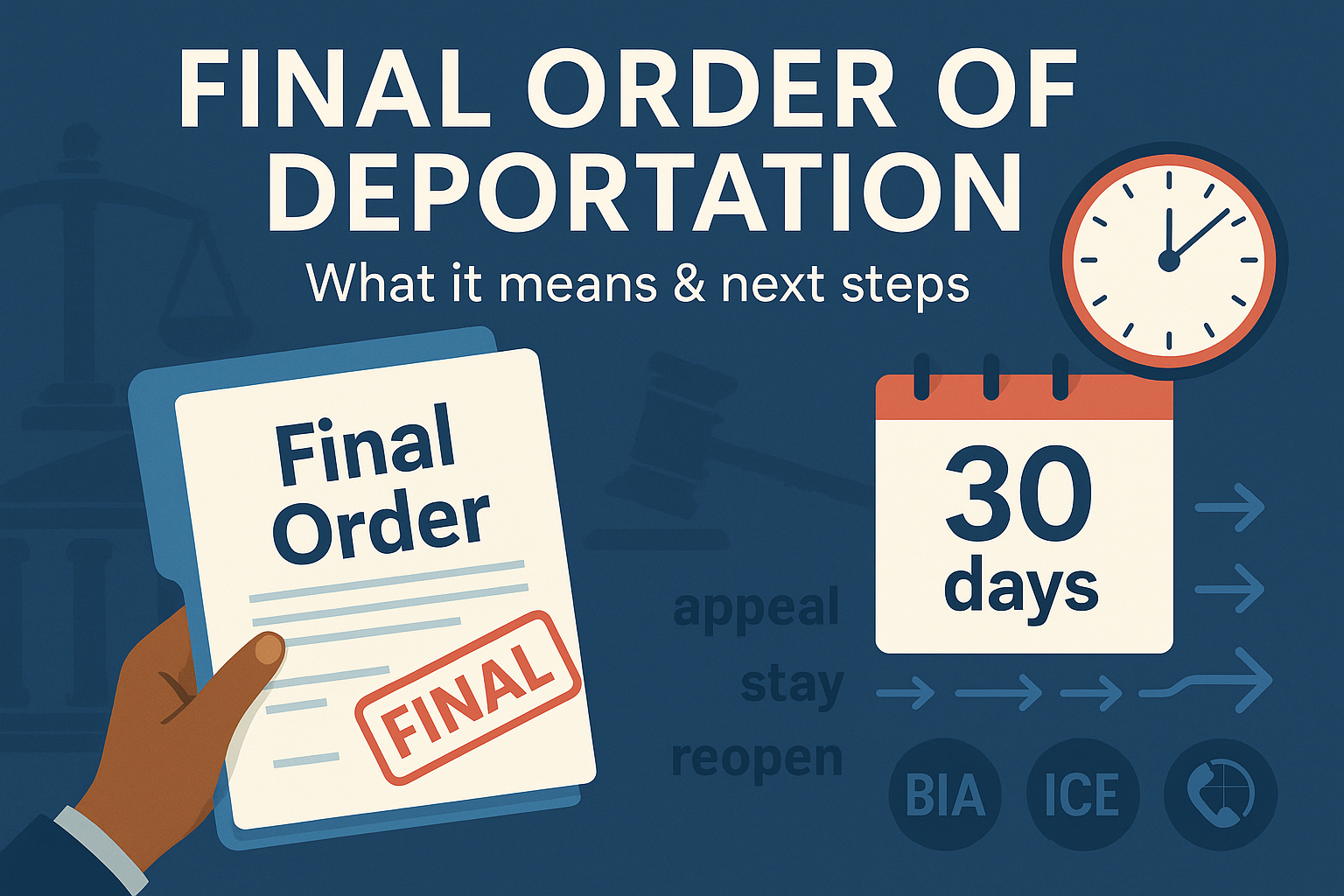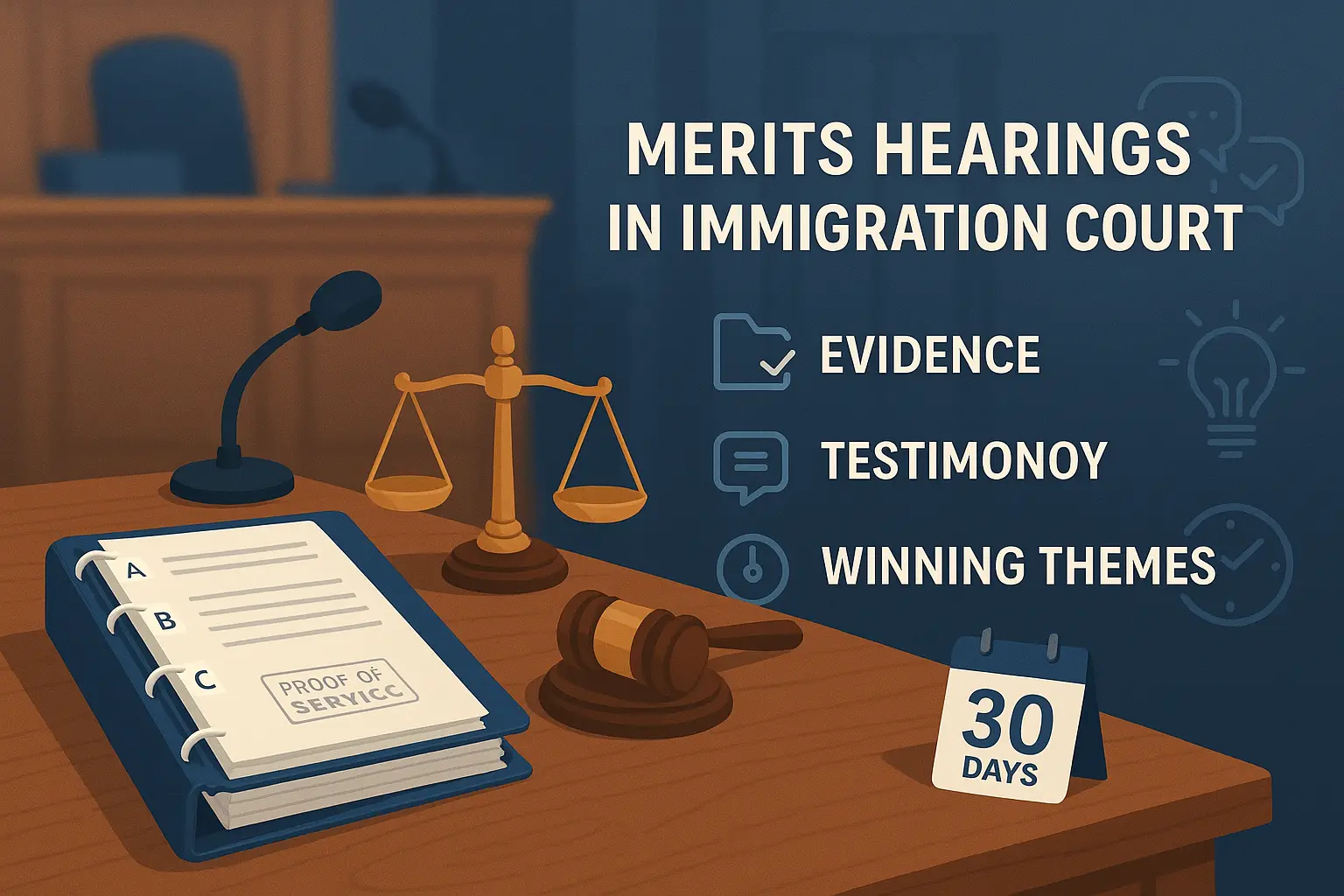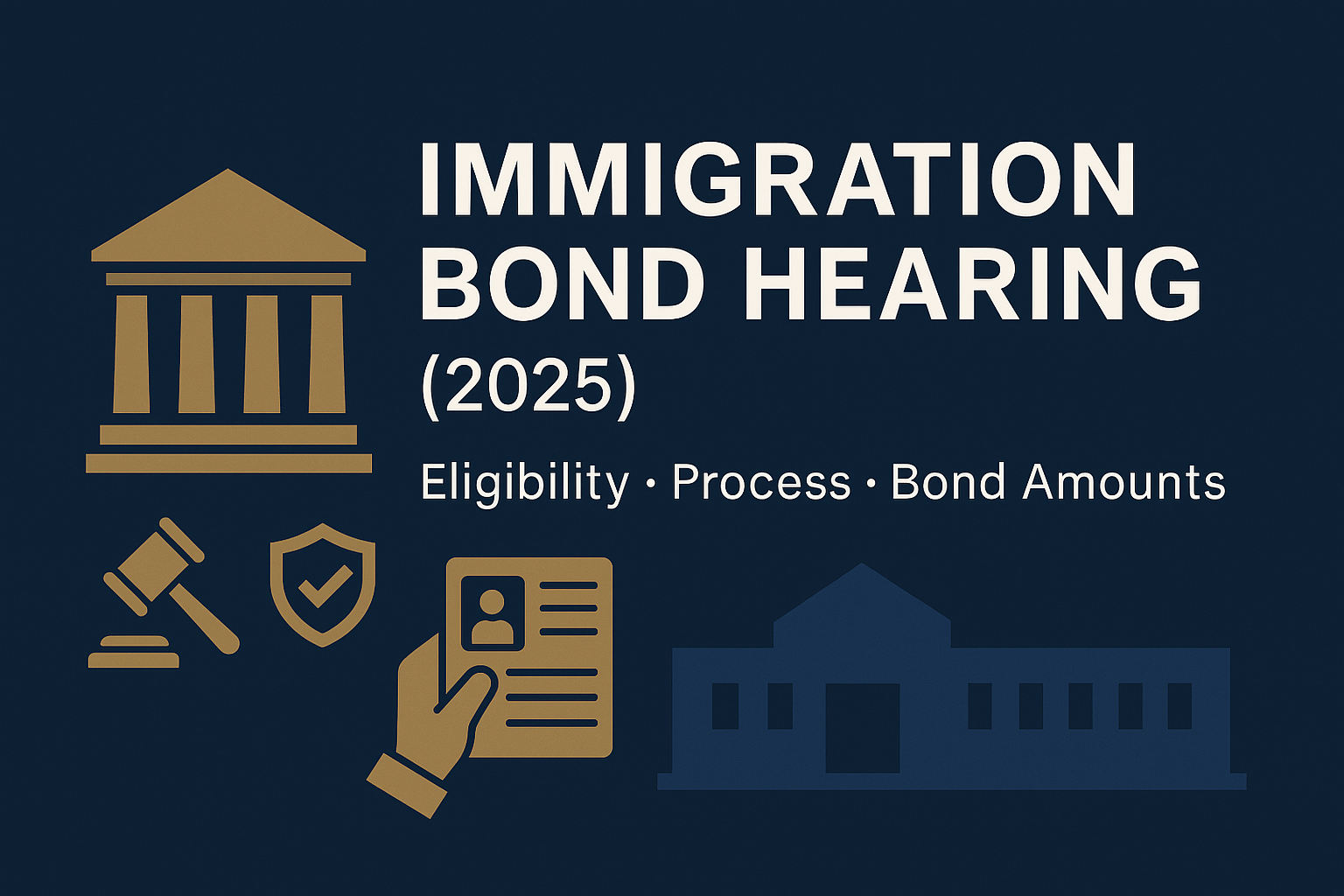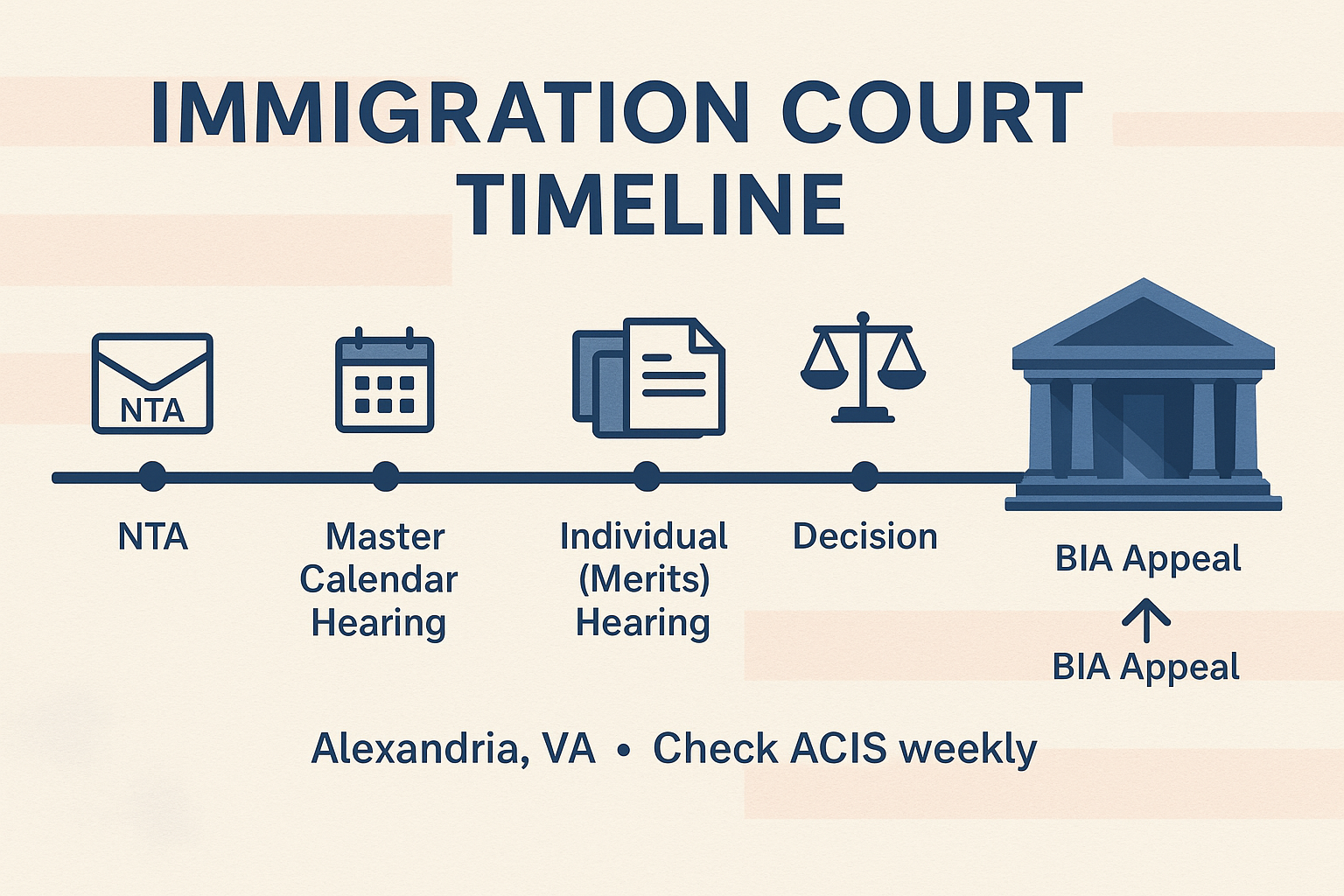Voluntary Departure vs. Removal Order: Pros, Cons, and Long-Term Impact
Facing the end of your immigration case is overwhelming, and if you’ve reached this stage, you may be offered a choice between voluntary departure and a removal order. The decision matters deeply for your future in the United States and your ability to return legally later.
At Law Group International, we guide clients through these critical decisions with honesty, care, and clear legal strategy. Here’s what you need to know before deciding which path makes sense for you.
Key Facts You Should Know
- Voluntary departure (VD) lets you leave the U.S. on your own terms, at your own expense, and without a deportation order, if you meet the requirements and depart on time. 8 CFR § 1240.26
- Pre-conclusion VD allows up to 120 days to depart; post-conclusion VD allows up to 60 days. You must post a VD bond (minimum $500) within 5 business days of the judge’s decision.
- If you fail to post the bond or don’t leave on time, your alternate removal order becomes final, and harsh penalties apply, including 10 years of ineligibility for several immigration benefits. (American Immigration Council)
- A removal order triggers the INA 212(a)(9)(A) inadmissibility bar, often 10 years after deportation. By contrast, a timely and successful VD avoids this bar, though it doesn’t erase unlawful presence bars (3- and 10-year rules). (USCIS)
- People planning future reentry may need different waivers:
What Voluntary Departure Is (in 60 Seconds)
Voluntary departure is permission to leave the U.S. without an order of removal, if you meet specific conditions and depart within a limited time. It’s available before or after your immigration judge’s final decision.
There are two types of VD under INA § 240B:
| Type | When It’s Granted | Maximum Time to Depart | Key Rules |
| Pre-conclusion | Before the case ends, usually at or before the first merits hearing. | Up to 120 days | Must request early; judge cannot grant beyond 30 days after the merits hearing unless DHS agrees. (8 CFR § 1240.26(b)) |
| Post-conclusion | After the judge denies relief and before removal order becomes final. | Up to 60 days | Must show 1 year of physical presence, 5 years of good moral character, no aggravated felony, and ability to depart. Bond required within 5 business days. |
Voluntary Departure vs. Removal Order (Side-by-Side Comparison)
| Topic | Voluntary Departure (VD) | Removal Order |
| What it is | Permission to leave the U.S. voluntarily without a deportation order. | An enforceable order authorizing removal by ICE. |
| Time window | Up to 120 days (pre) / 60 days (post). | Immediate enforcement after order becomes final. |
| Bond | Minimum $500, must be posted within 5 business days. | None. |
| If you fail to comply | Alternate removal order becomes final; 10-year bar on some benefits (INA 240B(d)). | INA 212(a)(9)(A) inadmissibility (5–20 years depending on case). |
| Future immigration impact | Avoids 212(a)(9)(A) bar if you leave on time; may still trigger 3-/10-year unlawful presence bars. | Triggers 212(a)(9)(A); reentry requires I-212 + possibly I-601A. |
| Appeals or motions | Filing a motion to reopen or petition for review ends VD and activates removal order (no penalties). | Standard appeal/motion rules apply. |
Sources: 8 CFR § 1240.26, American Immigration Council.
When Voluntary Departure Makes Sense
Voluntary departure is often a smart choice when:
- You qualify for VD and can depart within the set timeframe.
- You want to avoid the removal-order inadmissibility bar under INA 212(a)(9)(A). (State Department – FAM)
- You plan to reenter lawfully in the future through consular processing, and you can apply for an I-601A waiver before leaving. (USCIS I-601A)
When Voluntary Departure Is Risky
VD may not be the best fit if:
- You can’t post the bond or get travel documents within the required deadlines.
- You intend to appeal or reopen your case, filing during the VD window automatically cancels VD and activates your removal order.
- You may be ineligible for VD due to certain criminal issues or lack of good moral character.
Deadlines and Compliance (Don’t Miss These)
| Requirement | Timeline | Rule |
| Departure period | ≤120 days (pre) / ≤60 days (post) | 8 CFR § 1240.26(f) |
| Bond posting | Within 5 business days | Receipt rule applies (ICE must receive it). |
| Failure to depart | Triggers alternate removal order and 10-year bar on relief. | INA § 240B(d); civil penalty up to $3,000. |
If you fail to leave on time, you may lose eligibility for cancellation, adjustment of status, or change of status for 10 years. (American Immigration Council)
Long-Term Immigration Impact
Removal order path:
- Usually results in 10-year inadmissibility under INA 212(a)(9)(A)(ii).
- Solution: Apply for Form I-212 (consent to reapply) and possibly Form I-601A.
Voluntary departure path:
- Avoids the 212(a)(9)(A) removal-order bar.
- Still triggers unlawful presence bars (3-year or 10-year), depending on how long you were in the U.S. without status. (USCIS – 3/10-Year Bars)
Reentry Planning: Choose the Right Path Before You Leave
Scenario A: Family petition (spouse/parent) + unlawful presence
– File I-601A before leaving if eligible. If you have a removal order, you’ll first need an approved I-212 to qualify.
Scenario B: Prior removal on record
– Expect INA 212(a)(9)(A) inadmissibility. You’ll need to map out your I-212 strategy and timing.
Scenario C: Prior removal + illegal reentry
– You may face the permanent bar under INA 212(a)(9)(C), which generally requires 10 years outside the U.S. before you can reapply.
FAQs – Voluntary Departure vs. Removal Order
Do I have to waive my appeal to get voluntary departure?
Yes, for post-conclusion VD you must waive appeal. For pre-conclusion VD, it’s handled differently and must be requested early.
What if I file a motion or appeal during the VD period?
Your VD automatically terminates; the alternate removal order becomes final, but 240B(d) penalties don’t apply.
What happens if I miss the bond or departure deadline?
Your alternate removal order becomes final, and you face up to 10 years of ineligibility for certain relief plus a possible civil fine.
Does voluntary departure remove the 3/10-year bars for unlawful presence?
No. It only helps you avoid the removal-order bar; unlawful presence penalties still apply.
Get Help Planning Your Next Step
Your final hearing is not the end, it’s your turning point. The right decision between voluntary departure and removal order can shape your future immigration options for years.
At Law Group International, we help clients:
- Determine if VD is available and beneficial.
- File bonds and departure paperwork correctly.
- Build reentry plans using I-601A or I-212 waivers.
Schedule your free 15-minute exit-strategy review through our Deportation Defense Service. Our team will confirm:
- Whether your order is final.
- What deadlines you face.
- What steps can protect your right to return.
Explore More Immigration Topics
What expedited removal means
November 19, 2025
Waivers that Matter in Court
November 11, 2025
Cancellation of Removal for LPRs
October 28, 2025
Cancellation of Removal for Non-LPRs
October 19, 2025
Deportation Defense in Virginia & DC: Complete Guide
October 17, 2025
What Is a Final Order of Deportation?
October 2, 2025
Merits Hearings in Immigration Court
September 30, 2025
Immigration Court Timeline: From NTA to Appeal
September 24, 2025

